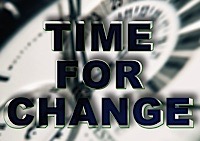 Entrepreneurs hear that VC pitches ought to be short, 10-20 slides. What most don’t know is that there is no way they can deliver a presentation that short by just “writing” the slide deck.
Entrepreneurs hear that VC pitches ought to be short, 10-20 slides. What most don’t know is that there is no way they can deliver a presentation that short by just “writing” the slide deck.
An entrepreneur I’ve known for a long time came by my ranch over Thanksgiving break to show me the first pass of his new startup slide deck.
My eyes were glazed by slide 9.
It was over 35 slides long, with each slide feeling like it had 12 lines of 10-point type. It had a problem statement going back to the invention of the telephone, an opportunity claiming to exceed the Gross National Product and it had every possible product feature with enough left over for three other startups products.
My first reaction was, “you got to be kidding.” Yet I was hearing the pitch from an experienced entrepreneur with multiple wins under his belt. He had raised money from name-brand VC’s in past startups and knew what a fundable VC slide deck looked like. What was going on?
innovation DAILY
Here we highlight selected innovation related articles from around the world on a daily basis. These articles related to innovation and funding for innovative companies, and best practices for innovation based economic development.
New Law Lets the Feds Sponsor Prize Competitions
 The repeal of Don’t Ask Don’t Tell and the ratification of a brand-new START treaty represent milestone achievements for the suddenly prolific lame duck Congress, and the press has covered these developments accordingly. But Congress passed another law amid this flurry of activity—the America COMPETES Act—and although the media didn’t cover this move nearly as vigorously, it is potentially quite significant and praiseworthy in its own right.
The repeal of Don’t Ask Don’t Tell and the ratification of a brand-new START treaty represent milestone achievements for the suddenly prolific lame duck Congress, and the press has covered these developments accordingly. But Congress passed another law amid this flurry of activity—the America COMPETES Act—and although the media didn’t cover this move nearly as vigorously, it is potentially quite significant and praiseworthy in its own right.
America COMPETES authorizes continued growth in the budgets of the Department of Energy’s Office of Science, the laboratories of the National Institute of Standards and Technology, and the National Science Foundation, 3 agencies focused on incubating and generating innovations designed to keep our country at the forefront of an increasingly competitive global economy.
Beyond this, in what many hope will become a bona fide turning point in the effort to leverage American ingenuity and innovation, America COMPETES empowers all federal agencies to sponsor prize competitions to spur innovation, solve particularly vexing problems in their domains, and advance their missions.
Rooftops, Empty Lots, or the Desert: Where Does the Future of Solar Lie?
 Since Edison’s day, we have been generating electricity in basically the same way: by using massive, centralized power plants.
Since Edison’s day, we have been generating electricity in basically the same way: by using massive, centralized power plants.
Along the way, utilities have become enormous entities with thousands of employees and billions of dollars in revenue. Many of them are public companies that pay generous and reliable dividends, making them a favorite investment for grandmothers everywhere.
But the model now faces two distinct challenges. First, a majority of scientists, policy leaders, the public and business executives and others have come to the conclusion that greenhouse gases need to be reduced.
Tis the season to manufacture
 Tis the holiday season, when Santa’s workshop hums with elfin activity. But what about America’s workshop?
Tis the holiday season, when Santa’s workshop hums with elfin activity. But what about America’s workshop?We have come to expect that the lion’s share of the toys under our Christmas trees will say made-in-China. But is it also inevitable that in a globalized economy, the United States should cede its place as a leading manufacturer? We think not. Our nation’s manufacturing base not only provides jobs, wages, and economic security for the middle class but also drives the process of economic innovation that is essential for our overall competitiveness. Manufacturing truly is the gift that keeps on giving, through new ideas about how to make things better, resulting in new jobs and new companies that can compete ever more effectively in global markets.
Infographic of the Day: Diabetes Is Spreading Like a Virus
Slate has produced a sobering time lapse animation showing the inexorable spread of diabetes across America.
The rise in diabetes is, of course, linked to the rising rates of obesity across America. But what's truly stunning is just how prevalent the disease has become, and how meteoric the growth rates are. Here's what the country looks like on a county-by-county basis in 2004. The darker the color, the higher the incidence of diabetes:

Third Frontier renewal tops Ohio biomedical highlights in 2010
 Most people in Ohio’s biomedical industry would’ve considered 2010 a good year if just one key thing happened — voters renewed the state’s $1.35 billion, 10-year Third Frontier program, which is designed to energize Ohio’s economy by investing in cutting-edge technology.
Most people in Ohio’s biomedical industry would’ve considered 2010 a good year if just one key thing happened — voters renewed the state’s $1.35 billion, 10-year Third Frontier program, which is designed to energize Ohio’s economy by investing in cutting-edge technology.
It happened. And elation ensued in board rooms, investors’ offices and research laboratories.
By a nearly two-to-one margin, voters approved Third Frontier with a $700 million, four-year extension that’ll keep it alive until at least 2016 — and beyond, the industry no doubt prays. From CEOs to scientists to venture capitalists, nearly everyone in the industry will tell you that Third Frontier has been absolutely critical to the success of Ohio’s growing biomedical industry, which now boasts more than 1,600 organizations with a combined payroll of nearly $4 billion, according to BioOhio.
5 Technologies That Will Change Your Life
The technology world is well-known for its hype and hyperbole, not to mention more than a little vaporware. And, as part of the industry for more than a quarter century, you’d be hard-pressed to find anyone who’s more of a skeptic than I am.
A lot of stuff hasn’t lived up to the hype, and there’s sure to be plenty more:
* Virtual reality, for one thing, comes to mind.
* I won’t be surprised if home 3D falls flat, as well, at least until we can chuck the glasses. Yes, I’ve seen demos of 3D technology without the glasses. It’s coming … eventually.
* Come to think of it, I don’t really get electric cars, either. I mean, why pay more for a car you have to plug in when you can get a hybrid?
Key Provisions of the tax legislatiuon: an Email from Robert P. Casey, Jr

- Federal Income Tax Reductions: The legislation extends current income tax rates for all American taxpayers at all levels of income for two more years.
- An Employee-Side Payroll Tax Cut of Approximately 2%: The legislation includes an employee-side payroll tax cut for over 155 million workers – providing tax relief of about $112 billion next year.
- Extension of Unemployment Benefits: The legislation extends emergency unemployment benefits at their current level for 13 months, preventing an estimated 7 million workers from losing their benefits as they search for jobs.
- The Child Tax Credit: The $3,000 refundability threshold established in the Recovery Act for the Child Tax Credit will be extended under the legislation, ensuring an ongoing tax cut to 10.5 million lower-income families with 18 million children.
- The Earned Income Tax Credit: The legislation continues a Recovery Act expansion of the Earned Income Tax Credit worth, on average, $600 for families with 3 or more children, and reduces the “marriage penalty” faced by working married families. Together, these enhancements to the EITC will help 6.5 million working parents with 15 million children.
- The American Opportunity Tax Credit: The new American Opportunity Tax Credit – a partially refundable tax credit that helps more than 8 million students and their families afford the cost of college – is continued under the legislation.
- 100 Percent Expensing: The legislation includes the President’s proposal to temporarily allow businesses to expense 100% of their investments in 2011, potentially generating more than $50 billion in additional investment in 2011, which will fuel job creation.
- 1603 Renewable Energy Grants: The legislation extends the 1603 program, which is helping to support tens of thousands of jobs in the wind and solar industries.
- Estate Taxes: There will be a $5 million exclusion and a 35% tax on estate values above the $5 million threshold.

To Innovate, You Need the Courage to Step Backward
 When we think of innovation, we tend to associate it with forward motion. We may envision it as a leap ahead—a radical breakthrough that happens quickly—or, more realistically, as a steady march forward, during which a series of small advances and refinements eventually lead to a desired outcome.
When we think of innovation, we tend to associate it with forward motion. We may envision it as a leap ahead—a radical breakthrough that happens quickly—or, more realistically, as a steady march forward, during which a series of small advances and refinements eventually lead to a desired outcome.
But in observing a number of leading designers and innovators over the past couple of years (including individuals such as Yves Behar, Bruce Mau, and Dean Kamen, and firms such as IDEO and Smart Design), what has struck me is how often these change-makers seem to be moving sideways and even backwards, in addition to moving forward. In my own head, I’ve started to think of this as a kind of “catalyst’s dance”—with the most common version of it being a nifty (and quite difficult) four-step.
Starting a business is faster, cheaper, but challenges remain
 The European Union adopted the Small Business Act in 2008, with the intention of making it easier to start and run a business. Two years on, the EurActiv network takes a look at the achievements and challenges ahead.
The European Union adopted the Small Business Act in 2008, with the intention of making it easier to start and run a business. Two years on, the EurActiv network takes a look at the achievements and challenges ahead.
Starting her own online art gallery in London this year took Gina Cross about a week and cost £70 (€82), about the average for entrepreneurs in the United Kingdom.
Likewise, in Bulgaria, France and Ireland, registering a new business costs less than €100 and takes less than a week.
"It’s quite easy," said Cross, founder of A Little Bit of Art, a small company which sells printed artworks.
But in Poland and Spain, entrepreneurs still wait about a month for their initial paperwork to be approved. In Italy, Luxembourg, Greece and the Netherlands, the process is faster but expensive – more than €1,000.
Detroit getting first ever satellite U.S. patent office – boost for innovation
 As 2010 comes to a close, Michigan has gotten some great news for our economy and the strength of technical innovation in our state.
As 2010 comes to a close, Michigan has gotten some great news for our economy and the strength of technical innovation in our state.
Commerce Secretary Gary Locke announced Dec. 16 that Detroit would be home to the first-ever satellite office of the U.S. Trade and Patent Office, the government agency that grants the patents and trademarks that give legal protection to the innovations that help make our economy grow.
This decision will bring more than 100 high-skill jobs to our state in the first year and it will help Michigan businesses and innovators get their new ideas and products to market more quickly.
The Winners: Reader’s Choice 2010 Small Business Book Awards
 We are delighted to officially announce the winners of the 2010 Small Business Book Awards, Reader’s Choice edition, here at Small Business Trends.
We are delighted to officially announce the winners of the 2010 Small Business Book Awards, Reader’s Choice edition, here at Small Business Trends.
About the Awards
This year — our 3rd year — the Awards were more exciting than ever, with outstanding support from the small business community. We set up a voting site using the same Pligg platform that we use for our social bookmarking site, BizSugar.com, but customized for one-click voting. Books were nominated by a combination of our Book Editors and by the community.
Of the 110 books nominated this year, nearly 60 nominations came from YOU – the community. Over 41,000 votes were cast – more than 10 times the number last year. It’s a real testament to the support given to the authors of these books. That support is especially important because most of the authors are themselves entrepreneurs and small business owners.
CONGRATS TO OUR FRIEND MELINDA EMERSON................RICH BENDIS
The Science Coalition lauds House, Senate passage of America COMPETES
 The Science Coalition issued the following statement today from President Deborah Altenburg after the U.S. House of Representatives passed H.R. 5116, the America COMPETES Reauthorization Act of 2010:
The Science Coalition issued the following statement today from President Deborah Altenburg after the U.S. House of Representatives passed H.R. 5116, the America COMPETES Reauthorization Act of 2010:
On behalf of The Science Coalition’s 46 member universities, we thank the U.S. House of Representatives and Senate for reauthorizing this vital piece of legislation just days before its expiration and amid a busy lame duck session. The America COMPETES Act has tremendous implications for future job creation, economic growth and American competitiveness abroad.
Extending and funding COMPETES helps protect basic research and research-related jobs today and ensures the vitality of the American economy tomorrow. As noted in the National Academies’ 2005 “Rising Above the Gathering Storm” report, which spurred the original passage of COMPETES in 2007, innovation — driven by knowledge and research — is the key to maintaining and enhancing America’s standard of living.
Six Tips to Maximizing Your Advisory Board Value
 If you are an entrepreneur for the first time, or entering a new business area, it’s usually worth your time to assemble an Advisory Board of two or three executives who have travelled that road before. But if you select the wrong people, or use them incorrectly, the impact will not be positive for your company or your image.
If you are an entrepreneur for the first time, or entering a new business area, it’s usually worth your time to assemble an Advisory Board of two or three executives who have travelled that road before. But if you select the wrong people, or use them incorrectly, the impact will not be positive for your company or your image.
For perspective, you need to remember that boards of advisors, unlike directors, have no formal power or fiduciary duties, but rather serve at the pleasure of you the business owner. But they are not likely to stroke your ego, or be cheerleaders. They need to tell you the truth about your business, good or bad.
Minorities Need Equity Access, not SBA Loans
 The Small Business Administration recently announced two new programs that will increase lending to businesses in disadvantaged areas and to those headed by minorities and women. Beginning in mid-March, Small Business Advantage and Community Advantage will allow mission-based financial institutions to issue SBA-guaranteed loans of up to $250,000. "These new 'Advantage' initiatives are aimed directly at getting more loans into these markets so these small business owners can get the capital they need …," SBA Administrator Karen Mills explained in a press release. While I agree with Mills that a lack of capital deters many minority business owners from starting businesses, I don't think further loan programs are the answer.
The Small Business Administration recently announced two new programs that will increase lending to businesses in disadvantaged areas and to those headed by minorities and women. Beginning in mid-March, Small Business Advantage and Community Advantage will allow mission-based financial institutions to issue SBA-guaranteed loans of up to $250,000. "These new 'Advantage' initiatives are aimed directly at getting more loans into these markets so these small business owners can get the capital they need …," SBA Administrator Karen Mills explained in a press release. While I agree with Mills that a lack of capital deters many minority business owners from starting businesses, I don't think further loan programs are the answer.
Far fewer blacks and Hispanics start businesses than whites, with combined incorporated and unincorporated self-employment rates at 11.6 percent for whites, vs. a mere 6 percent for blacks and 8 percent for Hispanics, according to analysis by Steve Hipple of the Bureau of Labor Statistics. Explanations for this gap include differences in interest in entrepreneurship, family background, and work experience, but I agree with the many economists who believe that the low net worth of minority households is one of the primary culprits. (The median net worth of minority households is $28,000, vs. $170,000 for white households, according to the most recent Federal Reserve Survey of Consumer Finances.) Here's where I differ from my peers: I say the solution to improving startup rates lies in improved access to equity investment—not debt.
5 Social Innovation Trends In 2011
 Markets tend to move based on innovation that improves buyer experiences and productivity. Market leaders know this and constantly seek ways to innovate.
Markets tend to move based on innovation that improves buyer experiences and productivity. Market leaders know this and constantly seek ways to innovate.
Trends In Thinking About Innovation
Most organizational leaders understand the importance of innovation but fail to manage its pursuit effectively. There are many flaws in organizational management of innovation, including process shortcomings and a lack of business discipline that result in internal barriers to success. Additionally, most organizations are risk-aversion and fail to learn from past mistakes in pursue of innovation. Past innovation failures are most commonly attributed to incorrect pricing, failure to meet customer needs, and being late to market, which can be mitigated by improving management processes and leadership thinking. Innovation starts and ends with thinking differently.
Where's the Money? Bendis Quoted.
 In a lingering recession, seed money to develop new technologies in the private marketplace is more difficult to find than ever. But for intrepid entrepreneurs with good—no, make that great—ideas, the federal government is willing to help. An array of programs designed to help move new technology to the marketplace and spur the economy exists across the federal spectrum.
In a lingering recession, seed money to develop new technologies in the private marketplace is more difficult to find than ever. But for intrepid entrepreneurs with good—no, make that great—ideas, the federal government is willing to help. An array of programs designed to help move new technology to the marketplace and spur the economy exists across the federal spectrum.
Not surprisingly, the Small Business Administration is at the forefront of this effort with its Small Business Innovation Research (SBIR) and Small Business Technology Transfer programs (STTR).
SBIR allows qualified small businesses to compete for research and development financing by proposing innovations that meet the needs of the federal government. The program is a highly competitive, three-phase award system, specifically designed to fund research and development activities that private sector investors may label “too early” or “too risky.” SBIR, and its sister, STTR, encourage small firms to undertake scientific research that helps meet federal R&D objectives, and have high potential for commercialization if successful.

 Setting up a new PC can be confusing.
Setting up a new PC can be confusing.

